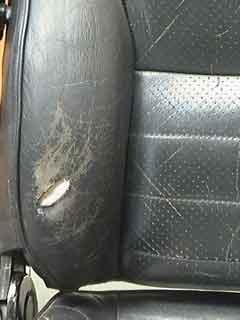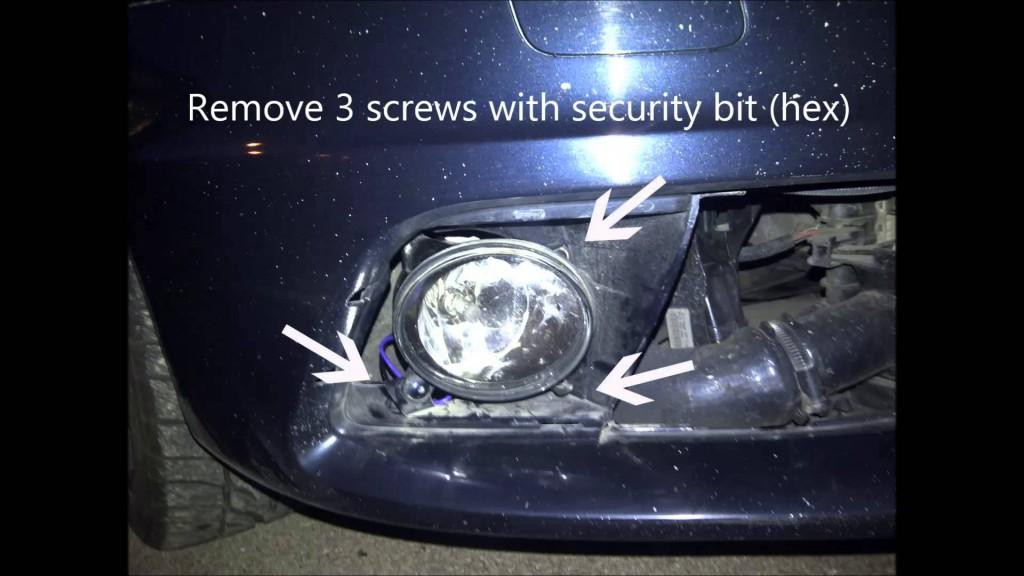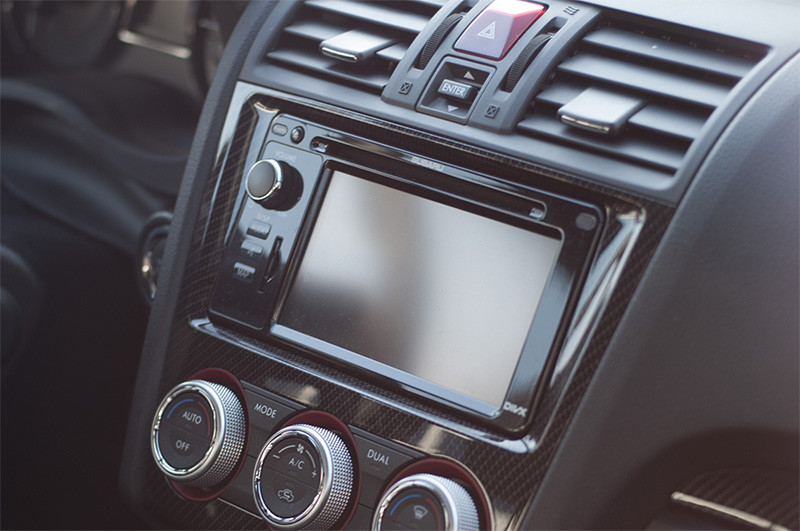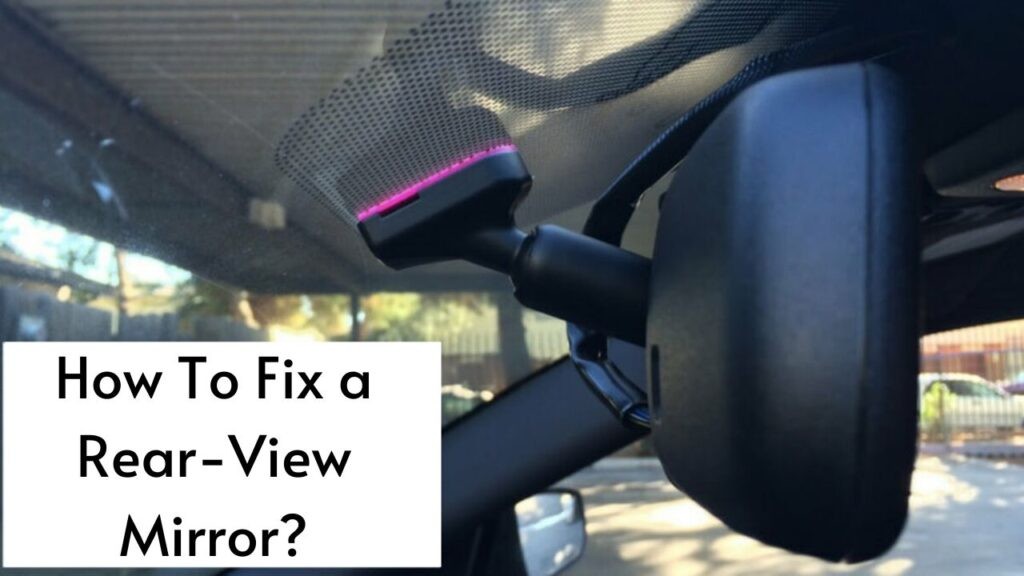How to Fix Scratched Car Window: A Comprehensive Guide
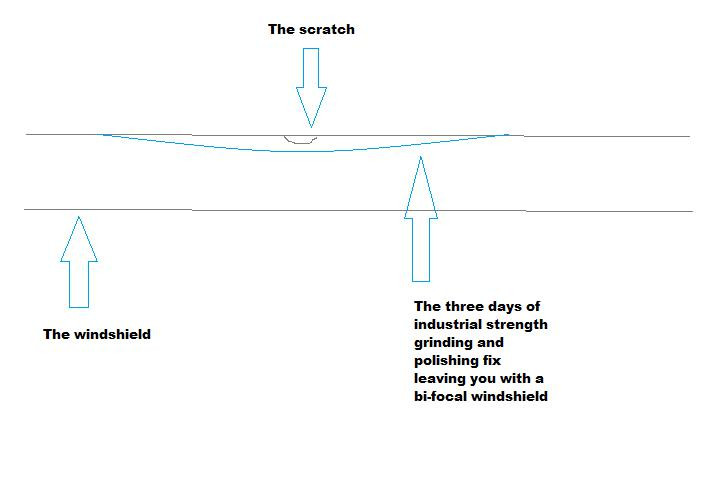
Fixing scratched car windows can seem daunting, but with the right tools and techniques, it’s possible. CARDIAGTECH.NET is here to guide you through the process, offering solutions to restore your car window’s clarity. Learn effective methods to repair minor abrasions and deeper scratches, ensuring optimal visibility and safety using scratch removal kits and polishing compounds, ultimately saving you the cost of a replacement.
1. Understanding Car Window Scratches
Before diving into the repair process, it’s crucial to understand the types of scratches you’re dealing with. Car window scratches can range from minor surface blemishes to deep, noticeable gouges. Knowing the difference will help you choose the most effective repair method.
- Surface Scratches: These are light scratches that only affect the surface of the glass. They’re often caused by debris, wiper blades, or improper cleaning techniques. Surface scratches are usually the easiest to repair.
- Medium Scratches: These scratches are deeper than surface scratches and can be felt with a fingernail. They may cause slight distortion in your vision.
- Deep Scratches: These are the most severe type of scratch, often caused by vandalism or larger debris. Deep scratches can significantly impair visibility and may require professional repair or window replacement.
The severity of the scratch dictates the repair approach. CARDIAGTECH.NET offers a range of tools suitable for tackling everything from minor surface imperfections to more substantial damage.
2. Identifying the Cause of Scratches
Understanding what caused the scratches on your car window can help you prevent future damage. Common causes include:
- Wiper Blades: Worn or damaged wiper blades can drag debris across the windshield, causing scratches.
- Road Debris: Small rocks, sand, and other debris can scratch the glass as they’re kicked up by other vehicles.
- Improper Cleaning: Using abrasive cleaners or cloths can scratch the window surface.
- Vandalism: Unfortunately, intentional scratching can occur, resulting in deep and unsightly damage.
Addressing the cause of the scratches is as important as repairing them. Regular maintenance and careful driving habits can significantly reduce the risk of window damage.
3. Assessing the Damage
Before attempting any repairs, carefully assess the extent of the damage. This will help you determine whether a DIY repair is feasible or if professional help is needed.
- Clean the Window: Use a glass cleaner to thoroughly clean the window surface. This will remove any dirt or debris that might obscure the scratches.
- Inspect the Scratches: Examine the scratches in good lighting. Use your fingernail to feel the depth of the scratches. If your fingernail catches, the scratches are likely medium to deep.
- Evaluate Visibility: Check how the scratches affect your visibility, especially in different lighting conditions. Significant distortion or glare may indicate that the damage is too severe for DIY repair.
A thorough assessment will guide you in choosing the right tools and techniques for the job. CARDIAGTECH.NET provides expert advice and high-quality tools to help you make the right decision.
4. Essential Tools and Materials
To effectively fix scratched car windows, you’ll need a few essential tools and materials. Here’s a comprehensive list:
- Glass Cleaner: For cleaning the window before and after repairs.
- Microfiber Cloths: Soft, lint-free cloths for cleaning and polishing.
- Glass Polishing Compound: A specialized compound designed to remove scratches from glass.
- Polishing Pads: Various pads for applying the compound, including felt and foam pads.
- Electric Polisher: A power tool for efficient and even polishing (optional but recommended).
- Spray Bottle: For misting water onto the glass during polishing.
- Masking Tape: To protect surrounding areas from the polishing compound.
- Safety Glasses: To protect your eyes from debris and chemicals.
- Gloves: To protect your hands from the polishing compound.
- Detailing Clay: To remove embedded contaminants from the glass surface.
Investing in quality tools and materials from CARDIAGTECH.NET will ensure a successful and long-lasting repair. Our selection is curated to meet the needs of both novice and experienced auto enthusiasts.
5. Step-by-Step Guide to Repairing Minor Scratches
Repairing minor scratches on your car window is a straightforward process that can be completed in a few hours. Follow these steps for the best results:
- Clean the Window: Thoroughly clean the scratched area with glass cleaner and a microfiber cloth. Make sure the surface is free of dirt and debris.
- Apply Masking Tape: Use masking tape to protect the surrounding areas of the window, including the trim and paint.
- Apply Polishing Compound: Apply a small amount of glass polishing compound to a felt polishing pad.
- Polish the Scratches: Using an electric polisher (or by hand), polish the scratched area in a circular motion. Apply moderate pressure and keep the pad moving to avoid overheating the glass.
- Mist with Water: Periodically mist the glass with water from a spray bottle to keep the polishing compound moist and prevent it from drying out.
- Continue Polishing: Continue polishing for several minutes, checking your progress periodically.
- Clean the Area: Once the scratches appear to be diminished, clean the area with glass cleaner and a microfiber cloth.
- Inspect and Repeat: Inspect the area for any remaining scratches. If necessary, repeat the polishing process.
- Remove Masking Tape: Carefully remove the masking tape.
- Final Cleaning: Give the entire window a final cleaning with glass cleaner.
With patience and the right tools, you can significantly improve the appearance of minor scratches on your car window. CARDIAGTECH.NET provides all the necessary supplies and expert advice to guide you through the process.
6. Addressing Medium Scratches: A More Intensive Approach
Medium scratches require a more intensive approach than minor scratches. These steps will help you tackle deeper imperfections:
- Prepare the Window: Start by thoroughly cleaning the window and applying masking tape to protect the surrounding areas.
- Use Detailing Clay: Use detailing clay to remove any embedded contaminants from the glass surface. This will help the polishing compound work more effectively.
- Apply Polishing Compound: Apply a generous amount of glass polishing compound to a felt polishing pad.
- Aggressive Polishing: Using an electric polisher, polish the scratched area with firm pressure. Work in small, overlapping sections.
- Monitor Heat: Pay close attention to the heat buildup on the glass. If the glass becomes too hot, stop polishing and let it cool down.
- Multiple Passes: Repeat the polishing process multiple times, checking your progress after each pass.
- Switch to Foam Pad: Once the scratches are significantly reduced, switch to a foam polishing pad and continue polishing with lighter pressure.
- Clean and Inspect: Clean the area with glass cleaner and inspect your work. Repeat the polishing process as needed.
- Final Touches: Remove the masking tape and give the window a final cleaning.
Addressing medium scratches requires patience and persistence. CARDIAGTECH.NET offers a range of polishing compounds and pads to help you achieve professional-quality results.
7. When to Seek Professional Help
While DIY repairs can be effective for minor to medium scratches, deep scratches often require professional attention. Here are some signs that it’s time to call in the experts:
- Deep Gouges: If the scratches are deep enough to significantly impair visibility.
- Extensive Damage: If there are numerous scratches or a large area of damage.
- Distorted Vision: If the scratches cause significant distortion or glare.
- DIY Failure: If you’ve attempted DIY repairs and haven’t achieved satisfactory results.
Professional auto glass technicians have the tools and expertise to safely and effectively repair or replace damaged car windows. Don’t hesitate to seek their help if you’re unsure about tackling the repairs yourself.
8. Preventing Future Scratches
Prevention is always better than cure. Here are some tips to help you prevent future scratches on your car windows:
- Replace Wiper Blades Regularly: Replace your wiper blades every 6-12 months, or sooner if they show signs of wear.
- Use Quality Glass Cleaners: Use glass cleaners specifically designed for automotive use. Avoid abrasive cleaners that can scratch the glass.
- Clean Windows Regularly: Regularly clean your windows to remove dirt, debris, and contaminants.
- Park Smart: Park your car in covered areas or away from trees to avoid falling debris.
- Drive Carefully: Avoid driving on gravel roads or in areas with heavy road debris.
- Apply Glass Protectant: Consider applying a glass protectant to create a barrier against scratches and other damage.
Taking these preventative measures can help keep your car windows in pristine condition for years to come.
9. Choosing the Right Polishing Compound
Selecting the right polishing compound is crucial for achieving the best results. There are many different types of glass polishing compounds available, each with its own unique properties. Here’s a guide to help you choose the right one:
- Cerium Oxide: This is a highly effective polishing compound that’s ideal for removing moderate to deep scratches. It’s known for its abrasive properties and ability to restore clarity to glass.
- Diamond Paste: Diamond paste is an even more aggressive polishing compound that’s designed for removing severe scratches and imperfections. It’s typically used by professionals.
- Glass Polishing Cream: These creams are designed for removing light scratches and blemishes. They’re easy to use and are a good choice for DIY repairs.
- All-in-One Compounds: Some polishing compounds combine cleaning and polishing properties. These are convenient for minor touch-ups and maintenance.
Consider the severity of the scratches and your level of experience when choosing a polishing compound. CARDIAGTECH.NET offers a wide selection of high-quality compounds to suit every need.
10. Polishing Techniques for Optimal Results
Mastering the right polishing techniques is essential for achieving optimal results. Here are some tips to help you polish your car windows like a pro:
- Use the Right Pad: Choose the appropriate polishing pad for the job. Felt pads are best for aggressive polishing, while foam pads are ideal for finishing and polishing.
- Apply Even Pressure: Apply even pressure to the polishing pad. Avoid pressing too hard, as this can cause overheating and damage to the glass.
- Work in Sections: Work in small, overlapping sections. This will ensure that you cover the entire scratched area evenly.
- Keep the Pad Moving: Keep the polishing pad moving at all times. This will prevent the compound from drying out and avoid creating swirl marks.
- Mist with Water: Periodically mist the glass with water to keep the polishing compound moist and cool.
- Inspect Frequently: Inspect your work frequently to check your progress and identify any areas that need more attention.
- Clean After Each Pass: Clean the area with glass cleaner after each polishing pass to remove residue and evaluate the results.
By following these techniques, you can achieve professional-quality results and restore the clarity of your car windows.
11. Safety Precautions
Safety should always be a top priority when working on your car. Here are some essential safety precautions to keep in mind:
- Wear Safety Glasses: Always wear safety glasses to protect your eyes from flying debris and chemicals.
- Wear Gloves: Wear gloves to protect your hands from the polishing compound and other chemicals.
- Work in a Well-Ventilated Area: Work in a well-ventilated area to avoid inhaling harmful fumes.
- Follow Product Instructions: Always follow the manufacturer’s instructions for the polishing compound and other products you’re using.
- Avoid Overheating: Avoid overheating the glass by keeping the polishing pad moving and misting with water.
- Disconnect Battery: If you’re working near any electrical components, disconnect the car battery to prevent accidental shocks.
- Keep Children and Pets Away: Keep children and pets away from the work area to prevent accidents.
By taking these safety precautions, you can minimize the risk of injury and ensure a safe and successful repair.
12. Alternative Repair Methods
In addition to polishing, there are a few alternative repair methods that can be used to fix scratched car windows. These methods may be suitable for certain types of damage:
- Glass Repair Resin: Glass repair resin is a liquid adhesive that’s used to fill in cracks and chips in glass. It can also be used to fill in shallow scratches.
- Scratch Repair Kits: Scratch repair kits typically include a polishing compound, applicator pads, and other tools. These kits are designed for DIY repairs and can be effective for minor scratches.
- Professional Filling: Some auto glass shops offer a scratch-filling service. This involves injecting a clear resin into the scratch to make it less visible.
Evaluate the type and severity of the damage to determine if an alternative repair method is appropriate.
13. Maintaining Your Car Windows After Repair
Once you’ve repaired your scratched car windows, it’s important to maintain them to prevent future damage. Here are some tips:
- Regular Cleaning: Clean your car windows regularly with a quality glass cleaner and a microfiber cloth.
- Proper Wiper Blades: Replace your wiper blades every 6-12 months, or sooner if they show signs of wear.
- Avoid Abrasive Cleaners: Avoid using abrasive cleaners or cloths that can scratch the glass.
- Apply Glass Protectant: Consider applying a glass protectant to create a barrier against scratches and other damage.
- Inspect Regularly: Inspect your car windows regularly for any signs of new scratches or damage.
Consistent maintenance will help keep your car windows looking their best and ensure optimal visibility.
14. Understanding Insurance Coverage
If your car windows have been scratched due to vandalism or an accident, your insurance policy may cover the cost of repairs or replacement. Here’s what you need to know:
- Comprehensive Coverage: Comprehensive coverage typically covers damage to your car that’s not caused by a collision, such as vandalism, theft, or natural disasters.
- Collision Coverage: Collision coverage covers damage to your car that’s caused by a collision with another vehicle or object.
- Deductible: Your deductible is the amount you have to pay out of pocket before your insurance coverage kicks in.
- Filing a Claim: To file a claim, contact your insurance company and provide them with details about the damage, including photos and a police report if necessary.
- Glass Coverage: Some insurance policies offer specific glass coverage, which may have a lower deductible or no deductible at all.
Review your insurance policy to understand your coverage options and any limitations or exclusions that may apply.
15. Cost Considerations
The cost of fixing scratched car windows can vary depending on the severity of the damage and the repair method used. Here’s a general overview of the costs involved:
- DIY Repairs: DIY repairs can cost as little as $20-$50 for polishing compounds, pads, and other supplies.
- Professional Scratch Filling: Professional scratch filling services can cost $50-$150 per scratch.
- Window Replacement: Window replacement can cost $200-$500 or more, depending on the type of car and the complexity of the installation.
Consider the cost of each repair method when deciding how to proceed. DIY repairs can be a cost-effective option for minor scratches, while professional services may be necessary for more severe damage.
16. The Role of CARDIAGTECH.NET in Your Repair Journey
CARDIAGTECH.NET is your trusted partner in fixing scratched car windows. We offer a wide range of high-quality tools, materials, and expert advice to help you achieve professional-quality results. Here’s how we can assist you:
- Quality Products: We offer a curated selection of glass polishing compounds, polishing pads, electric polishers, and other essential tools.
- Expert Advice: Our team of experienced professionals is available to provide expert advice and guidance on the best repair methods for your specific situation.
- Step-by-Step Guides: We offer detailed step-by-step guides and tutorials to help you through the repair process.
- Customer Support: Our customer support team is available to answer your questions and provide assistance whenever you need it.
At CARDIAGTECH.NET, we’re committed to helping you restore the clarity and beauty of your car windows. Contact us today to learn more about our products and services.
17. Legal Considerations
Driving with a scratched or damaged windshield can be illegal in some areas. Here’s what you need to know about the legal considerations:
- Visibility Laws: Many states have laws that prohibit driving with a windshield that obstructs the driver’s vision.
- Inspection Requirements: Some states require vehicles to pass a safety inspection, which may include an inspection of the windshield.
- Liability: If you’re involved in an accident and your scratched windshield is found to have contributed to the accident, you could be held liable.
Check your local laws and regulations to ensure that your windshield meets all safety requirements.
18. Environmental Impact
When repairing or replacing car windows, it’s important to consider the environmental impact of your actions. Here are some ways to minimize your environmental footprint:
- Recycle Glass: Recycle any broken or damaged glass whenever possible.
- Use Eco-Friendly Cleaners: Use eco-friendly glass cleaners and polishing compounds.
- Dispose of Chemicals Properly: Dispose of any used chemicals or materials properly, according to local regulations.
- Reduce Waste: Reduce waste by using reusable cloths and minimizing the amount of product you use.
By making environmentally conscious choices, you can help protect the planet while maintaining your car.
19. Case Studies: Real-World Examples
To illustrate the effectiveness of different repair methods, here are a few real-world case studies:
- Case Study 1: Minor Scratches from Wiper Blades
- Problem: A car owner noticed fine scratches on their windshield caused by worn wiper blades.
- Solution: The owner used a glass polishing cream and a foam polishing pad to remove the scratches.
- Result: The scratches were significantly reduced, and the windshield’s clarity was restored.
- Case Study 2: Medium Scratches from Road Debris
- Problem: A car owner had medium scratches on their side window caused by road debris.
- Solution: The owner used a cerium oxide polishing compound and a felt polishing pad to remove the scratches.
- Result: The scratches were significantly diminished, and the window’s appearance was improved.
- Case Study 3: Deep Scratches from Vandalism
- Problem: A car owner had deep scratches on their windshield caused by vandalism.
- Solution: The owner consulted with a professional auto glass technician, who recommended replacing the windshield.
- Result: The windshield was replaced, restoring the driver’s visibility and safety.
These case studies demonstrate that the right repair method can make a significant difference in the appearance and safety of your car windows.
20. Frequently Asked Questions (FAQs)
Here are some frequently asked questions about fixing scratched car windows:
- Can I use regular household cleaners on my car windows?
- No, household cleaners can be too harsh and may damage the glass or tint. Use glass cleaners specifically designed for automotive use.
- How can I tell if a scratch is too deep to repair?
- If your fingernail catches on the scratch, it’s likely too deep for DIY repair.
- Is it safe to drive with a scratched windshield?
- It depends on the severity of the scratches. If the scratches obstruct your vision, it’s not safe and may be illegal.
- Can I use a drill instead of an electric polisher?
- While it’s possible, it’s not recommended. Electric polishers are designed to provide consistent speed and pressure, which is essential for effective polishing.
- How long does it take to fix a scratched car window?
- DIY repairs can take anywhere from 1-3 hours, depending on the severity of the scratches and your level of experience.
- Will polishing remove window tint?
- Yes, polishing can remove window tint. Be careful when polishing tinted windows and avoid polishing the tinted area if possible.
- Can I fill in scratches with super glue?
- No, super glue is not designed for glass repair and may damage the window. Use glass repair resin instead.
- How often should I replace my wiper blades?
- Replace your wiper blades every 6-12 months, or sooner if they show signs of wear.
- What is cerium oxide?
- Cerium oxide is a highly effective polishing compound that’s ideal for removing moderate to deep scratches from glass.
- How can CARDIAGTECH.NET help me fix my scratched car window?
- CARDIAGTECH.NET offers a wide range of high-quality tools, materials, and expert advice to help you achieve professional-quality results.
Conclusion: Restore Your Car Window’s Clarity Today
Don’t let scratched car windows compromise your safety and the appearance of your vehicle. With the right tools, techniques, and guidance from CARDIAGTECH.NET, you can effectively repair minor to medium scratches and restore your car window’s clarity. For deep scratches or extensive damage, don’t hesitate to seek professional help. Remember to take preventative measures to avoid future scratches and maintain your car windows for years to come.
Ready to get started? Contact CARDIAGTECH.NET today for expert advice and the best tools and materials for fixing your scratched car windows. Call us at +1 (641) 206-8880 or visit our website at CARDIAGTECH.NET. Our address is 276 Reock St, City of Orange, NJ 07050, United States. Let us help you see clearly and drive safely
Attention! Are you tired of looking at those unsightly scratches on your car windows? Do they impair your visibility and make your car look unkempt? Imagine driving with crystal-clear windows, enjoying a safer and more pleasant driving experience.
Interest! At CARDIAGTECH.NET, we understand the frustration of dealing with scratched car windows. That’s why we offer a comprehensive range of high-quality tools and materials designed to effectively repair scratches and restore your windows to their original clarity. Whether you’re a seasoned auto enthusiast or a first-time DIYer, we have the perfect solution for you.
Desire! Picture yourself effortlessly polishing away those scratches, revealing a flawless surface that enhances your car’s appearance and improves your visibility. With our expert guidance and top-notch products, you can achieve professional-quality results without breaking the bank. Say goodbye to blurry vision and hello to a safer, more enjoyable driving experience.
Action! Don’t wait any longer to restore your car windows to their former glory. Contact CARDIAGTECH.NET today and let our team of experts help you find the perfect tools and materials for your needs. Call us now at +1 (641) 206-8880 for a personalized consultation, or visit our website at CARDIAGTECH.NET to explore our extensive selection of products. Our address is 276 Reock St, City of Orange, NJ 07050, United States. Take action now and experience the difference that CARDIAGTECH.NET can make!
 Scratched Car Window Before Repair
Scratched Car Window Before Repair




